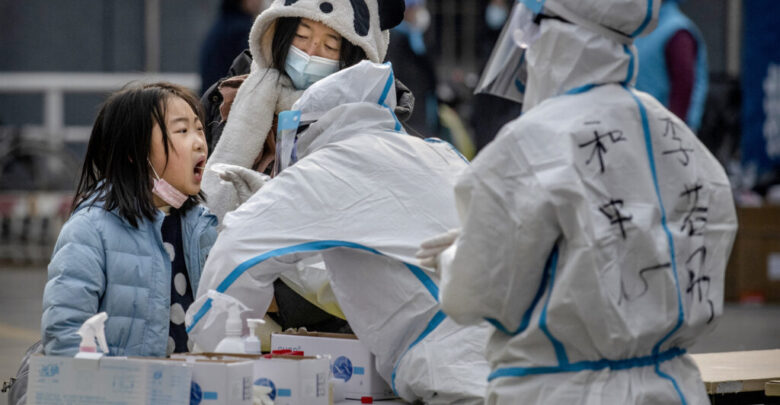

KOLKATA, India — Partha Paul, 46, a self-employed businessman in Kolkata’s packaging industry, woke up to a new reality during the first wave of the Covid-19 pandemic in India.
“I supply packaging materials for garments and other apparel, and there was a robust demand for my products before the pandemic,” Paul told Zenger News.
“However, from last year, I have been forced to sell my products on credit, and seldom do I get timely cash payments.”
Even then, the INR 2 lakh ($2,685) worth of products that he sold since 2020 is less than what he sold in the years preceding the pandemic. The annual income of his household was a little above INR 4 lakh ($5,370) but after the pandemic, it dropped sharply below INR 2 lakh.
Now, Paul is struggling to pay for his daughter’s school tuition. He says even paying monthly electricity bills has become an arduous task.

“My family fell sick during the pandemic, but we didn’t get tested or go to the hospital for the fear of spending money, which is hard to come by already,” he said.
Like Paul, many who are part of India’s middle-class—those with incomes of $10-20 a day—have been witnessing a steady decline in living standards.
India’s middle-income tier shrunk by 32 million people in 2020, accounting for 60 percent of the rollback in the global middle-class, according to a study by Pew Research Center.
Many like Paul slid into the low-income tier (earning $2-10 per day) and many have fallen below the global poverty line (earning less than $2 a day).
“The main impact of the pandemic has been a sharp contraction in global economic growth and India has not been spared,” Rakesh Kochhar, senior researcher at the Pew Research Center and the author of the study, told Zenger News.

“Thus, it is inevitable that the effects would lead to people losing their jobs. In terms of the income distribution, now we are stuck with more poor people and few middle-income earners. This situation has no parallels. The closest we have come to this was perhaps during the great depression.”
The study found that self-employed workers in India witnessed the highest loss in earnings with an 18 percent decline in their income in 2020, in the aftermath of a nationwide lockdown to curb the spread of Covid-19.
Paul’s brother Jayanta, who works for a construction company, also landed in troubled waters soon after the first lockdown was announced in March 2020.
“After the imposition of the lockdown, my company stopped paying me my salary, and only a month’s salary was provided to me for three months’ work [during the lockdown],” Jayanta told Zenger News.
“This made it impossible to support my family and I had to resort to taking loans from friends.”

The Pew Research Center study found that in 2020, half of the salaried workers moved to the informal sector. Of the salaried workers, 30 percent were self-employed, 10 percent were casual wage-workers, and 9 percent were informal salaried individuals.
This adversely affected income levels across the country and around 230 million individuals received less than the minimum national wage (INR 375 per day as recommended by the Anoop Satpathy committee) in 2020.
“If you consider the salaried workers as more or less belonging to the middle class, around 50 percent of them lost their jobs during the pandemic,” Amit Basole, director of the Centre for Sustainable Employment at Azim Premji University in Bengaluru, told Zenger News.
Drop-in living standards
Before the pandemic, the World Bank had anticipated that around 99 million people would fall under the middle-income category in India by 2020. However, the number was cut by a third—only an estimated 66 million were a part of the Indian middle class during the period. Many fell into poverty.
“The impact of the pandemic on the middle class in India was worse than the rest of the world as Indians do not have the access to a social safety net available to many in the global middle class,” Ashish Kulkarni, assistant professor at the Gokhale Institute of Politics and Economics in Pune, told Zenger News.
“When it comes to health insurance coverage or adequate savings, India lags other developed countries.”

Still, middle-income earners around the world found themselves on the short end of the stick.
Between 2011 and 2019, the global middle class increased by 54 million people each year on average—reaching 1.34 billion in eight years. However, with the pandemic, 54 million fell off this category.
In India, most workers fell under the global low-income tier than in any other income bracket in 2020.
The World Bank had estimated in 2019 that 1.20 billion Indians would fall under the global low-income tier category in 2020, accounting for 30 percent of the world’s low-income populace. But now, the figure is expected to have reduced to 1.16 billion as more people are estimated to have fallen below the global poverty line.
Global poverty decreased at a rate of 49 million annually each year from 2011 to 2019. However, with the coronavirus disrupting businesses and livelihoods of people, 131 million were added to the poor category in 2020. India has contributed 60 percent of the total increase by adding 72 million poor people, setting back nearly three years of progress.

“If you look at Indian households, the pandemic has adversely affected the poor and middle-income families more compared to their rich counterparts,” N.R. Bhanumurthy, vice-chancellor of BR Ambedkar University, told Zenger News.
“This can be attributed to a sudden stop in economic activities and stringent lockdowns along with the negative health shocks of Covid-19. It all depends on the size of the fiscal stimulus; the Western countries have introduced larger relief packages as compared to India and, thus, their road to economic recovery has been smoother.”
Comparisons with China
India’s neighbor China also witnessed a drop in the living standards of its workforce. But when compared to the scenario in India — it has fared better, in part, due to a robust health care system and a generous fiscal stimulus. China, with the second-largest economy in the world and the largest population, is often at the forefront of global economic trends.
Around 30 million people (about the population of Texas) in China were added to the global low-income tier but the poverty rates in the country remain unaffected, with its poor increasing from 3 million to 4 million people.

About 10 million Chinese middle-class people slipped to the global low-income tier as compared to India’s 32 million.
“China and India both experienced a contraction in economic growth, but China was able to avoid going into the negative territory,” said Kochhar.
“So, their economy still grew in 2020, although at a slower rate than expected. India, on the other hand, had a sharp downward turn in economic growth. So, in 2020 it was in the negative 7 percent range—among the largest contractions in the world.”
Since heavy financial damage on China’s middle class was prevented, a big blow to the global middle class, which is 37 percent Chinese, was also averted.
“It is expected that the sharp economic contraction will be followed by an even sharper recovery,” said Kocchar. “But that story is still being written.”
(Edited by Amrita Das and Anindita Ghosh)
(The story originally appeared in The Diplomat)
The post Covid-19 Shrank India’s Burgeoning Middle Class appeared first on Zenger News.



